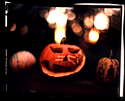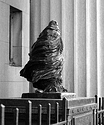ME, that formalin stabilizer will most likely be missing in a modern C41 process. But you can do it as final step, and as Tetenal's manuals state, you can do that later in time, i.e. long after the developed film has been returned to you. But what are you going to stabilize? Unstable dyes which have been incorrectly developed with the wrong chemical?
- Home
- Forums
- Analog Workflow Forums (100% Analog/Traditional)
- Darkroom
- Color: Film, Paper, and Chemistry
You are using an out of date browser. It may not display this or other websites correctly.
You should upgrade or use an alternative browser.
You should upgrade or use an alternative browser.
BW dev + lab c41 instead of e6?
-
A
- Thread starter SimonFreeman
- Start date
Recent Classifieds
-
For Sale Rolleiflex SL35 Silver Body
- Started by davela
-
Want to Buy Analog Forever Magazine 1-4
- Started by AffableHenchman
-
Want to Buy Mamiya Pro II 120 Film Back for my RZ67 Pro II & Electronic Grip
- Started by Christopherjs
-
For Sale Minolta M-Rokkor 90mm f4 for Leica M
- Started by Oldwino
-
For Sale Nikon F801s body
- Started by Oldwino
Forum statistics
SimonFreeman
Member
Yeah, I'm aware of both of these issues. Since I'm planning on buying an E6 kit anyway then this process is more of an experiment for me.
holmburgers
Member
I think it's a great experiment, I hope you treat us to a peek at it once you've done it.
Your post is awfully timely too, considering the slide news from Kodak.
Your post is awfully timely too, considering the slide news from Kodak.
I just came across this thread searching for something else. Last year a lab processed an E6 film as B&W. I later found a Kodak document - "Printing Color Films Developed as Black and White" dates April1999 document ref: AE-31.
In this they describe how to re-process to either get a BW negative
OR
re-process to get a color negative
The colour process follows the OP's initial thoughts, which involves Bleaching in either C41 or E6 bleach; then re-exposure to light; then follow a full C-41 process.
I have just done this with that film, trying colour processing for the first time to try and rescue this film and the negs are hanging up to dry. Look OK. So all you would need to do is get some E6 or C41 Bleach and then dry, re-spool and send the film for standard processing.
In this they describe how to re-process to either get a BW negative
OR
re-process to get a color negative
The colour process follows the OP's initial thoughts, which involves Bleaching in either C41 or E6 bleach; then re-exposure to light; then follow a full C-41 process.
I have just done this with that film, trying colour processing for the first time to try and rescue this film and the negs are hanging up to dry. Look OK. So all you would need to do is get some E6 or C41 Bleach and then dry, re-spool and send the film for standard processing.
I've done it, it works, colour on actual E-6 films become much poorer a few years later using C-41 as a colour developer when I checked (about 2 iirc) - even with formaldehyde stabilisation at time of processing.
The colour yield is good, it is poor when development is unsuitable, I can get great colour on either E-6 films or CD-4 films using CD-3, CD-4 and CD-2 based developers I've mixed, it can take some work to get there, but it's doable. I've gotten great colour out of C-41 films developed in Rodinal, and rehal processed for a colour negative with a green base using E-6 colour developer.
Stability is a different issue, C-41 films seem to fare better in that regard with the wrong agent, then E-6 films do, from what I could tell anyway.
Iirc, it took Xtol 1+1 I think it was 1+1 anyway about 40 minutes at 40 celsius to work, otherwise the slides were too dark (as in black), the solvency simply isn't strong enough to clear the highlights and requires massive development to hit full dMax in highlights to reverse it.
You otherwise would take sodium or potassium thiocyanate and add it to a developer (about ~1g/L) would be good), or sodium thiosulphate (about 10-15g/L) would be good. This will allow you to use more normal times and temperatures.
I would use Rodinal 1+25 or 1+50, that seems to work well across the different layers from various experiments with colour film.
All this isn't a substitute for regular colour processing, but good in it's own right.
No, not unless you print out the silver, would require to leave it out in harsh sun for a significant amount of time. Leaving it in an enclosed room over night would be fine. You don't need to let it dry before loading it again to continue process.
You could also use a reversal bath. They're pretty cheap, and can also be made from simple common ingredients if it cannot be bought (Kodak stuff etc).
The colour yield is good, it is poor when development is unsuitable, I can get great colour on either E-6 films or CD-4 films using CD-3, CD-4 and CD-2 based developers I've mixed, it can take some work to get there, but it's doable. I've gotten great colour out of C-41 films developed in Rodinal, and rehal processed for a colour negative with a green base using E-6 colour developer.
Stability is a different issue, C-41 films seem to fare better in that regard with the wrong agent, then E-6 films do, from what I could tell anyway.
Iirc, it took Xtol 1+1 I think it was 1+1 anyway about 40 minutes at 40 celsius to work, otherwise the slides were too dark (as in black), the solvency simply isn't strong enough to clear the highlights and requires massive development to hit full dMax in highlights to reverse it.
You otherwise would take sodium or potassium thiocyanate and add it to a developer (about ~1g/L) would be good), or sodium thiosulphate (about 10-15g/L) would be good. This will allow you to use more normal times and temperatures.
I would use Rodinal 1+25 or 1+50, that seems to work well across the different layers from various experiments with colour film.
All this isn't a substitute for regular colour processing, but good in it's own right.
Oh and is it possible to over-expose during second exposure? Can I just hang the film to dry in a room that isn't dark and let it stay there overnight?
No, not unless you print out the silver, would require to leave it out in harsh sun for a significant amount of time. Leaving it in an enclosed room over night would be fine. You don't need to let it dry before loading it again to continue process.
You could also use a reversal bath. They're pretty cheap, and can also be made from simple common ingredients if it cannot be bought (Kodak stuff etc).
Last edited by a moderator:
StoneNYC
Member
Question, if you were to make up a batch of the color developer of C-41 from scratch, but substitute out the CD-4 to CD-3 then would this solve the color stabilization issue? Would this also perhaps give more accurate color?
There are formulas for E-6 color developer in the web. So why use C-41 with other developer compound?
I also did this DIY E-6 processing. Like Athiril said: You need a very strong B/W developing to get clear highlights on the final slide.
I used Atomal-FF (A49) 12 minutes at 35°C. This is 15°C warmer and double time compared to a standard B/W film.
Then I re-exposed and developed in C-41.
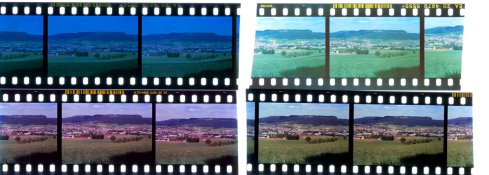
Upper left is Rodinal as first developer -> no way. Even half an hour dev time could not create the required density. So the result was too dark with a strong color shift to blue.
Upper right and lower left are experiments using ECN-2 color developer. This uses CD-3 like E-6, but there was a strong color shift which I could not get rid off by adjusting PH.
Lower right is C-41 color devoper. Also 12 minutes at 35°C, so much much longer than standard C-41.
This gave the best colors. Dmax is a bit less than using standard E-6 developer. But it works.
Developing the C-41 part in a minilab would be too short time and as a result too thin color slide.
Joachim
I also did this DIY E-6 processing. Like Athiril said: You need a very strong B/W developing to get clear highlights on the final slide.
I used Atomal-FF (A49) 12 minutes at 35°C. This is 15°C warmer and double time compared to a standard B/W film.
Then I re-exposed and developed in C-41.

Upper left is Rodinal as first developer -> no way. Even half an hour dev time could not create the required density. So the result was too dark with a strong color shift to blue.
Upper right and lower left are experiments using ECN-2 color developer. This uses CD-3 like E-6, but there was a strong color shift which I could not get rid off by adjusting PH.
Lower right is C-41 color devoper. Also 12 minutes at 35°C, so much much longer than standard C-41.
This gave the best colors. Dmax is a bit less than using standard E-6 developer. But it works.
Developing the C-41 part in a minilab would be too short time and as a result too thin color slide.
Joachim
Mogsby
Member
- Joined
- Jan 16, 2016
- Messages
- 151
- Format
- 35mm
There are formulas for E-6 color developer in the web. So why use C-41 with other developer compound?
I also did this DIY E-6 processing. Like Athiril said: You need a very strong B/W developing to get clear highlights on the final slide.
I used Atomal-FF (A49) 12 minutes at 35°C. This is 15°C warmer and double time compared to a standard B/W film.
Then I re-exposed and developed in C-41.
Joachim
Hi,
Is that Kodak elite chrome you used?.
Mogsby, until you get a definitive answer: the film samples shown by JoJo don't have frame numbers, therefore they don't look like the came from conventionally packaged film stock.
Jojo, I am quite surprised that this worked with Atomal A49, which is a mix of CD-1 and Hydroquinone. At least some color development must have happened in the first developer step, and this should have resulted in rather high Dmin.
Can you positively confirm that Atomal A49 was used as first developer?
Jojo, I am quite surprised that this worked with Atomal A49, which is a mix of CD-1 and Hydroquinone. At least some color development must have happened in the first developer step, and this should have resulted in rather high Dmin.
Can you positively confirm that Atomal A49 was used as first developer?
Yes, the film I used is E100D 35mm cinefilm. It is for process E-6.
The developer was "Adox Atomal 49" I bought in Germany. Sorry, not "A49". I am not sure if the developer is the same like old ORWO A49.
But you are right, it contains some kind of color developer. I am not sure if there are really dyes produced. I have never bleached a film after FD to see if there are colors. Density of the final result looks normal. The picture shows the result as is, without any Photoshopping or correction.
Joachim
Can you positively confirm that Atomal A49 was used as first developer?
The developer was "Adox Atomal 49" I bought in Germany. Sorry, not "A49". I am not sure if the developer is the same like old ORWO A49.
But you are right, it contains some kind of color developer. I am not sure if there are really dyes produced. I have never bleached a film after FD to see if there are colors. Density of the final result looks normal. The picture shows the result as is, without any Photoshopping or correction.
Joachim
twelvetone12
Member
I have c41 and some nice fresh atomal, I might give this a try, just for fun!  did you do c41 at normal 38 degrees and for normal times or at 35 also?
did you do c41 at normal 38 degrees and for normal times or at 35 also?
 did you do c41 at normal 38 degrees and for normal times or at 35 also?
did you do c41 at normal 38 degrees and for normal times or at 35 also?Mogsby
Member
- Joined
- Jan 16, 2016
- Messages
- 151
- Format
- 35mm
If you decide to do it, I would love to see the results.I have c41 and some nice fresh atomal, I might give this a try, just for fun!did you do c41 at normal 38 degrees and for normal times or at 35 also?
I have c41 and some nice fresh atomal, I might give this a try, just for fun!did you do c41 at normal 38 degrees and for normal times or at 35 also?
No, I wrote "Also 12 minutes at 35°C, so much much longer than standard C-41."
At 38C I guess around 8-10 Minutes.
twelvetone12
Member
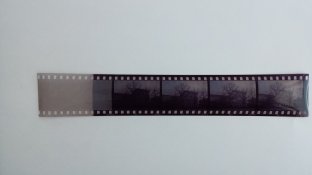
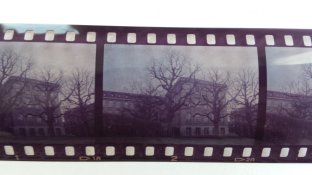
Yesterday I did this little experiment! I sacrificed a bit of fresh AgfaPhoto-Fuji slide film. As you can see the images are not particularly nice - they have a magenta tint and the blacks are very thin. BUT my jobo died while doing the FD, and all the rest was carried by hand quite in a haste. I suspect my CD was on the dead side, I did a C41 run just before this and the results are very grainy and quite color shifted. I will try it again when I repair the jobo beast (I just got a huge batch of e6 chemicals and was planning intensive development sessions grrr
 )
)The recipe was like this:
Temp: 38.0°, 150 ml of solutions
* FD atomal 49 stock, 10 minutes (jobo died at 6 minutes)
* Stop, 30 sec
* Exposure to white light, c.a. 1m, 2 minutes
* C41 CD, 5 minutes
* Stop, 30 sec
* C41 bleach, 6 minutes
* final rinse
georgegrosu
Member
What I see in your photos seems a problem of first developer.
At the first developer (b&w) change the time or temperature until they get a black and white good.
Other colors come by itself.
Here it looks like you overdevelop black and white developer.
Because of this you have that washed mauve instead of black.
Once you get a good level of black and white, then you can appreciate color developer.
It is useful to test the process with a color scale.
George
At the first developer (b&w) change the time or temperature until they get a black and white good.
Other colors come by itself.
Here it looks like you overdevelop black and white developer.
Because of this you have that washed mauve instead of black.
Once you get a good level of black and white, then you can appreciate color developer.
It is useful to test the process with a color scale.
George
twelvetone12
Member
georgegrosu
Member
Of course nobody can make a new photographic process from the first test.
First you have to know notions of expertise and knowledge of the present.
You have to be clear from what you go and where you want arrive.
You must have minimum notions of sensitometry..
You must learn to take responsibility of your actions.
I did all my tests without Jobo, without even a thermostat.
Put the dose in the sink with warm water.
I check temperature with a thermometer reading to 0.2 ° C.
Add hot water when necessary.
I respond temperature, development time, agitation,
I can not blame Jobo or anything.
You thank to take information from here and then you say look what you came out.
People will give a direction and say a principle.
You have to change parameters (time and temperature) to obtain the target tracked.
Might as your parameter to be different from you than recommended.
Might as your thermometer indicating thermometer to someone else differently.
Might that not correspond to your clock reference (unlikely).
Never change two parameters.
George
First you have to know notions of expertise and knowledge of the present.
You have to be clear from what you go and where you want arrive.
You must have minimum notions of sensitometry..
You must learn to take responsibility of your actions.
I did all my tests without Jobo, without even a thermostat.
Put the dose in the sink with warm water.
I check temperature with a thermometer reading to 0.2 ° C.
Add hot water when necessary.
I respond temperature, development time, agitation,
I can not blame Jobo or anything.
You thank to take information from here and then you say look what you came out.
People will give a direction and say a principle.
You have to change parameters (time and temperature) to obtain the target tracked.
Might as your parameter to be different from you than recommended.
Might as your thermometer indicating thermometer to someone else differently.
Might that not correspond to your clock reference (unlikely).
Never change two parameters.
George
Yeah I too think the FD was a bit too intensive. @JoJo did you use it stock or diluted? My plan was to do some tests with different strips and timings, but it is all postponed now until I fix the processor.
I used it stock.
But the temperature was a bit lower (35°C).
The black parts being too bright can also be because too weak CD processing.
CD process goes to the end, so you can increase CD deveoping time a lot.
I cannot say if results for different films are the same. I used Kodak E100D only and never tried another type.
Since slide film became rare and expensive, I stopped my experiments and use original E-6 process.
@ Mogsby: Didi you use ECN-2 or C-41 CD?
When I used ECN, I also got heavy color cast.
Joachim
Mogsby
Member
- Joined
- Jan 16, 2016
- Messages
- 151
- Format
- 35mm
I can see from your photo that the film is not bleached enough, t looks the same as mine, with a fogged look and bands buy the sprocket holes. I got the same and after re bleaching the film was a lot clearer. But I still had the magenta cast. On the second try I decreased the 1st dev time to 10 mins at 38c and increased the bleach time. Thanks magenta was very dark, but the blacks were more solid.View attachment 169206 View attachment 169207
Yesterday I did this little experiment! I sacrificed a bit of fresh AgfaPhoto-Fuji slide film. As you can see the images are not particularly nice - they have a magenta tint and the blacks are very thin. BUT my jobo died while doing the FD, and all the rest was carried by hand quite in a haste. I suspect my CD was on the dead side, I did a C41 run just before this and the results are very grainy and quite color shifted. I will try it again when I repair the jobo beast (I just got a huge batch of e6 chemicals and was planning intensive development sessions grrr)
The recipe was like this:
Temp: 38.0°, 150 ml of solutions
* FD atomal 49 stock, 10 minutes (jobo died at 6 minutes)
* Stop, 30 sec
* Exposure to white light, c.a. 1m, 2 minutes
* C41 CD, 5 minutes
* Stop, 30 sec
* C41 bleach, 6 minutes
* final rinse
Mogsby
Member
- Joined
- Jan 16, 2016
- Messages
- 151
- Format
- 35mm
I used it stock.
But the temperature was a bit lower (35°C).
The black parts being too bright can also be because too weak CD processing.
CD process goes to the end, so you can increase CD deveoping time a lot.
I cannot say if results for different films are the same. I used Kodak E100D only and never tried another type.
Since slide film became rare and expensive, I stopped my experiments and use original E-6 process.
@ Mogsby: Didi you use ECN-2 or C-41 CD?
When I used ECN, I also got heavy color cast.
I used C41 .... 5 mins Dev @38c.
Joachim
| Photrio.com contains affiliate links to products. We may receive a commission for purchases made through these links. To read our full affiliate disclosure statement please click Here. |
PHOTRIO PARTNERS EQUALLY FUNDING OUR COMMUNITY:  |
